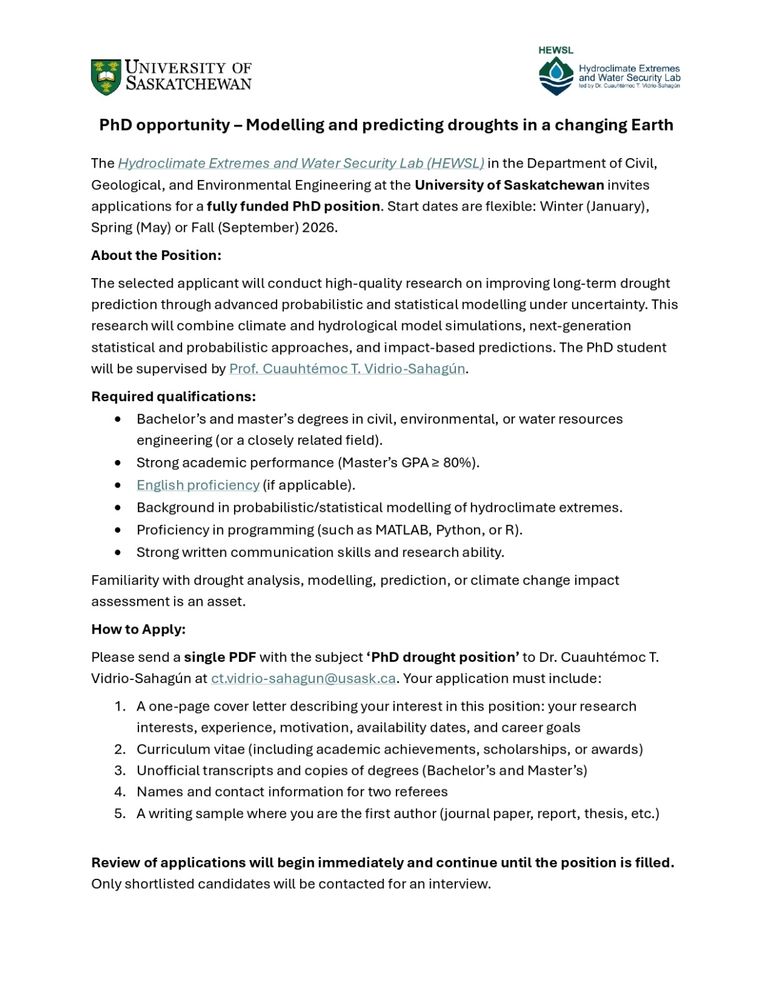
Please feel free to share the ad below with anyone who may be interested.

Please feel free to share the ad below with anyone who may be interested.
Most streamflow came from mountains–water towers.
Streamflow was stable, likely due to groundwater buffering on climate change.
Both ain and wetness drove floods.
Full open access paper: doi.org/10.1016/j.ej...
Most streamflow came from mountains–water towers.
Streamflow was stable, likely due to groundwater buffering on climate change.
Both ain and wetness drove floods.
Full open access paper: doi.org/10.1016/j.ej...
My group will focus on hydroclimate extremes and water security to foster more resilient communities.
Thank you to the wonderful people who have been part of this journey.




My group will focus on hydroclimate extremes and water security to foster more resilient communities.
Thank you to the wonderful people who have been part of this journey.
Our latest paper reviews and summarizes three decades of practices in Canada.
Practices are improving over time, but there is still a need to enhance consistency, realism, and research-to-practice translation.
🔗: doi.org/10.1080/0701...

Our latest paper reviews and summarizes three decades of practices in Canada.
Practices are improving over time, but there is still a need to enhance consistency, realism, and research-to-practice translation.
🔗: doi.org/10.1080/0701...

Our latest paper reviews and summarizes three decades of practices in Canada.
Practices are improving over time, but there is still a need to enhance consistency, realism, and research-to-practice translation.
🔗: doi.org/10.1080/0701...
We introduce advanced bias correction approaches to improve the applicability of extreme precipitation projections from climate models (CM) at local scales under climate change.
Full article available:
dx.doi.org/10.1029/2024...

We introduce advanced bias correction approaches to improve the applicability of extreme precipitation projections from climate models (CM) at local scales under climate change.
Full article available:
dx.doi.org/10.1029/2024...
doi.org/10.1016/j.ac...
doi.org/10.1016/j.ac...
Happy New Year to everyone!
#2025NewYear
Happy New Year to everyone!
#2025NewYear

